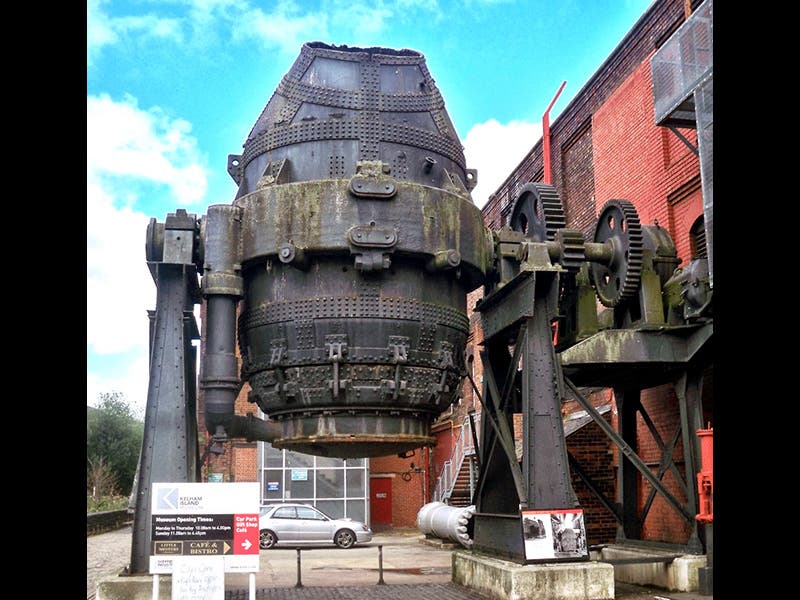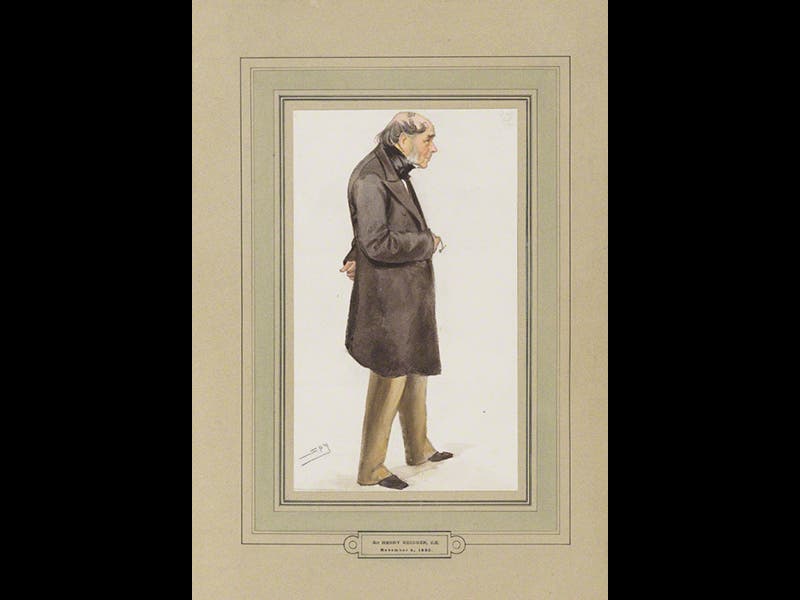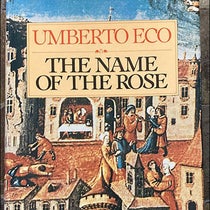Scientist of the Day - Henry Bessemer
Henry Bessemer, an English engineer and inventor, was born Jan. 19, 1813. In 1856, Bessemer announced that he had discovered a way to make inexpensive steel in large quantities without a furnace. The Bessemer process, as it is called, involves blowing air through molten pig iron. The oxygen in the air combines with the impurities in the pig iron, such as carbon and sand, to make oxides, such as carbon dioxide and silicon dioxide, which are then carried off by the air stream. Since oxidation also releases heat, the pig iron stays molten in spite of the continuous blast of air. In fact, the reaction is so violent that sparks and jets of molten matter are sprayed all over the place. To contain the process, Bessemer invented a vessel, soon called a Bessemer converter, which holds the molten iron and confines the fireworks until the iron has been converted to molten steel. In 1858, he modified the converter by mounting it on gimbals, so that it could tip to allow the steel to be poured off.
Before Bessemer, steel was prohibitively expensive, and cast iron was used in places that cried out for steel. Within a decade after Bessemer, steel was being used everywhere–for bridges, train rails, munitions, and ships. His adopted home of Sheffield became the steel-making center of Great Britain. And Bessemer, a shrewd as well as an imaginative businessman, got very rich. He was knighted in 1879, for either his ingenuity, or his wealth. He has several portraits in the National Portrait Gallery (second image above), he was considered enough of a celebrity to be caricatured in Vanity Fair (third image), and several of his converters are on outdoor display is such places as Sheffield, England (first image), and Pittsburgh, the steel-making hub of the U.S. There is a short video on YouTube that shows a Bessemer converter in action.
Dr. William B. Ashworth, Jr., Consultant for the History of Science, Linda Hall Library and Associate Professor, Department of History, University of Missouri-Kansas City. Comments or corrections are welcome; please direct to ashworthw@umkc.edu.









